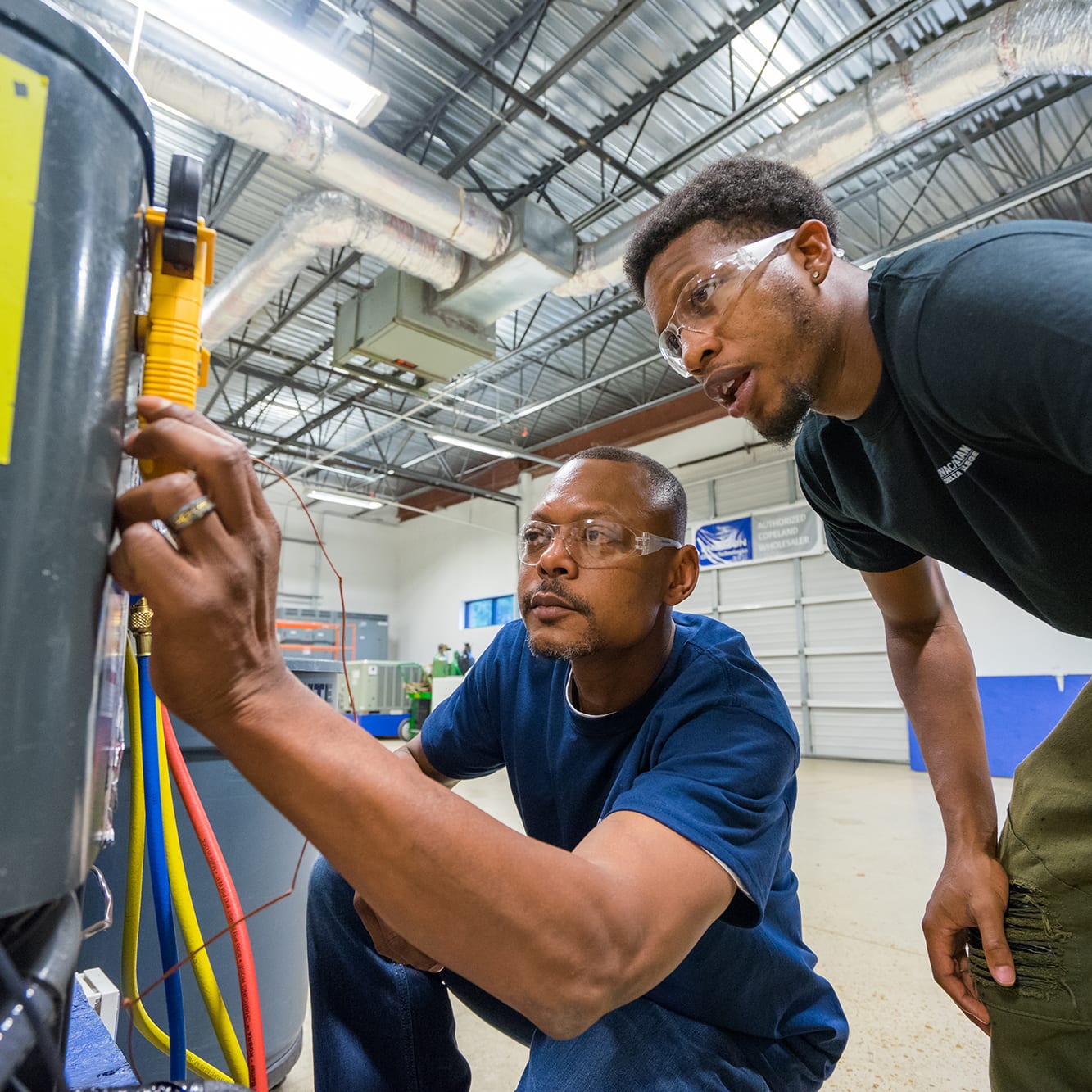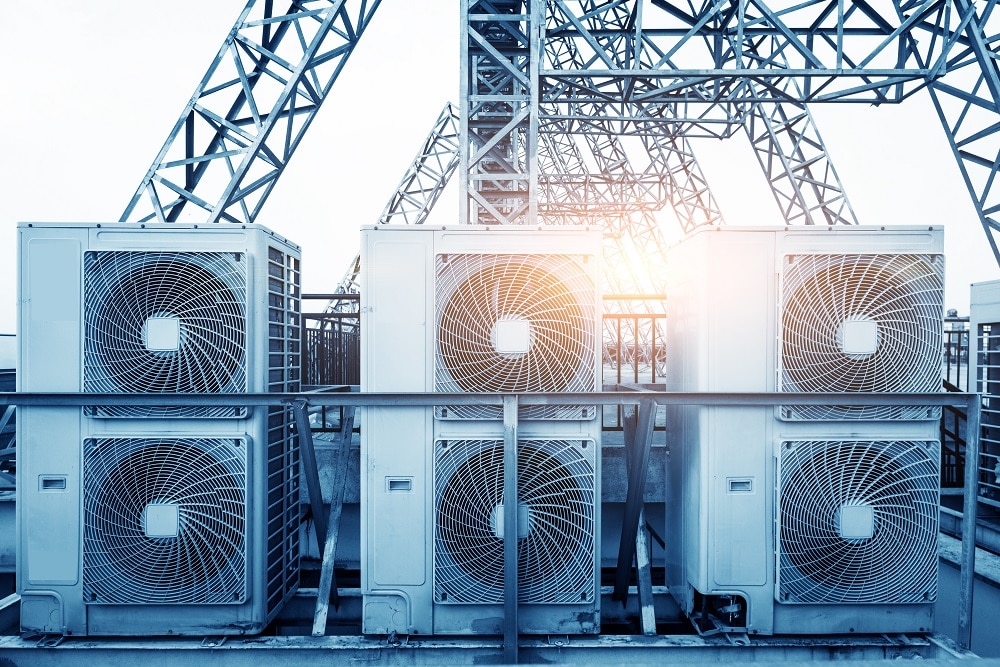Recognizing the Various Kinds Of HVAC System for Optimal Performance
Understanding the numerous kinds of heating and cooling systems is vital for house owners intending to enhance convenience and energy performance. Central air conditioning systems offer uniform temperature level control, while ductless mini-split systems supply flexibility. Heatpump provide efficient year-round environment administration. For smaller spaces, window and portable a/c unit work as practical remedies. Geothermal systems use consistent below ground temperature levels for sustainable heating & cooling. Each alternative holds special benefits, motivating a better examination of which could fit specific requirements best.
Central Air Conditioning Solutions
Although numerous homeowners seek ways to improve indoor comfort, recognizing central air conditioning systems is vital for effective environment control. Air conditioning operates by flowing great air through a system of air ducts, distributing it uniformly throughout the home. This type of system contains numerous essential parts, including an exterior compressor, an indoor evaporator coil, and a network of ductwork.
The compressor cools down cooling agent, which after that absorbs heat from interior air as it travels through the evaporator coil. This cooled air is pressed via the air ducts and into living areas, ensuring a consistent temperature. Central air systems are recognized for their performance, frequently making use of programmable thermostats to enhance power usage. Routine upkeep, such as filter adjustments and system checks, is vital to guarantee durability and performance. Understanding these elements helps home owners make notified choices regarding setup and maintenance, ultimately improving convenience and energy efficiency in their homes.

Ductless Mini-Split Solutions
Ductless mini-split systems use a versatile option to standard air conditioning, satisfying house owners seeking effective climate control without the need for extensive ductwork. These systems contain an exterior compressor device and several indoor air-handling units, allowing for targeted cooling and heating in specific locations or areas. This zoning capability enhances convenience by making it possible for customers to readjust temperatures based upon specific preferences, inevitably resulting in energy financial savings.
Installation is generally less complex and much less intrusive contrasted to ducted systems, which can be beneficial for older homes or rooms with limited architectural alterations. Furthermore, ductless mini-split systems typically feature energy-efficient technologies, such as inverter-driven compressors, which maximize power usage based on need. Their compact design additionally enables for various positioning choices, making them perfect for unique or tight areas. Consequently, ductless mini-split systems have obtained popularity amongst house owners searching for modern-day, effective heating and cooling remedies.
Warm Pumps
Warm pumps represent an energy-efficient and versatile alternative for both heating and cooling down domestic rooms. These systems operate by moving heat instead of creating it, making them particularly reliable in moderate climates. Throughout warmer months, heatpump remove warm from inside and release it outside, supplying cooling. Conversely, in winter months, they reverse this process, attracting warmth from the outside air or ground to heat the inside.
There are two main kinds of heat pumps: air-source and ground-source (or geothermal) Air-source heat pumps are much more usual due to their easier setup and lower first cost, while ground-source designs flaunt higher effectiveness and security in efficiency. Additionally, heatpump can significantly decrease power bills and carbon impacts when compared to conventional home heating techniques, making them an environmentally friendly option. Overall, warm pumps stand as an engaging remedy for home owners looking for efficient climate control throughout the year.
Home Window and Portable Air Conditioners

On the various other hand, mobile ac system provide versatility, as they can be quickly relocated from area to area. These systems commonly need a venting kit to wear down warm air through a window, yet they provide a convenient option for temporary cooling needs.
Both kinds of air conditioners are appropriate for renters and those seeking to avoid comprehensive installation processes. Customers need to think about aspects such as BTU capability, energy performance rankings, and noise degrees when picking a device to ensure peak performance for their specific room and cooling requirements.
Geothermal Heating & Cooling Systems
As power performance comes to be significantly crucial, geothermal cooling and heating systems have actually gained appeal for their lasting approach to environment control. These systems use the secure temperature levels located underground to give heating in winter season and air conditioning in summertime. By harnessing the planet's natural thermal power, geothermal systems significantly lower dependence on nonrenewable fuel sources and lower energy expenses.

Geothermal systems generally call for much less upkeep compared to conventional A/c systems, resulting in lasting cost savings. With enhancing awareness of environment change, these systems stand for a forward-thinking solution for those more info looking for reliable and environmentally friendly heating and cooling down options
Regularly Asked Inquiries
Exactly how Usually Should I Solution My A/c System?
A/c systems ought to ideally be serviced two times a year, when in the spring and as soon as in the autumn. Routine maintenance aids ensure efficiency, lengthens life expectancy, and avoids costly failures during peak use seasons.
What Dimension A/c System Do I Need for My Home?
Establishing the proper size for a HVAC system requires calculating the home's square footage, insulation quality, and environment. A specialist analysis assurances maximum efficiency, comfort, and power cost savings tailored to the certain needs of the home.
Can I Set Up a Heating And Cooling System Myself?
Mounting a heating and cooling system individually is possible, yet it requires technical expertise and skills. Blunders can lead to ineffectiveness or safety risks, so speaking with a professional is often suggested to assure proper setup and conformity with regulations.
What Are the Indications My Cooling And Heating System Needs Repair Work?
Indicators that a HVAC system needs fixing consist of unusual noises, inconsistent temperatures, increased power costs, unpleasant smells, and frequent cycling. Prompt attention to these indications can stop further damage and warranty top system efficiency.
Exactly How Can I Boost My cooling and heating System's Energy Performance?
To improve a/c energy effectiveness, one need to on a regular basis replace filters, seal ducts, mount a programmable thermostat, guarantee appropriate insulation, and timetable routine upkeep checks. HVAC experts. These actions jointly boost performance while minimizing power consumption and expenses
Central air conditioning systems give uniform temperature control, while ductless mini-split systems use adaptability. Central air conditioning operates by distributing cool air through a system of ducts, dispersing it uniformly throughout the home. Central air conditioning systems are understood for their performance, typically using programmable thermostats to maximize power use. Ductless mini-split systems provide a versatile choice to typical central air conditioning, catering to house owners looking for efficient climate control without the requirement for considerable ductwork. Geothermal systems typically require less maintenance compared to standard A/c systems, resulting in lasting financial savings.